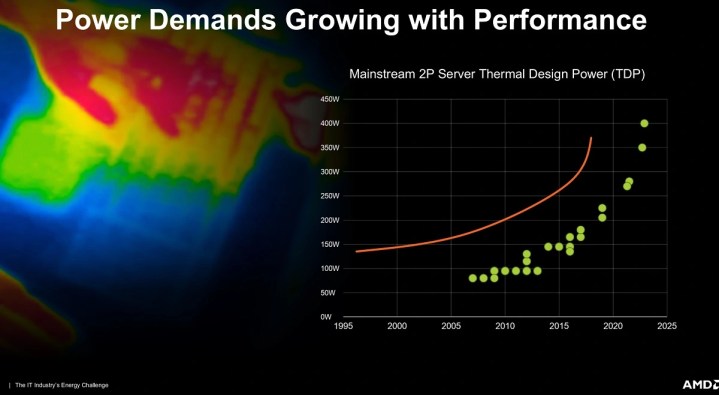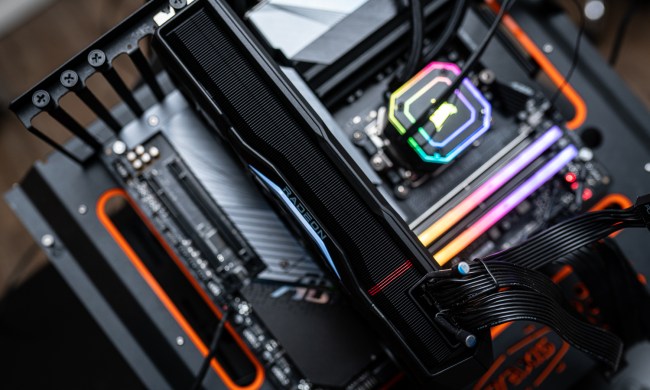In a recent interview, AMD talked about the future of its products, including high-performance GPUs. In that sector, the manufacturer rightfully predicts that as the capabilities of graphics cards grow, so will their power consumption.
AMD foresees that we might start seeing GPUs with a TDP as high as 700 watts even before the end of 2024. The company has also talked about further optimizations in terms of performance-per-watt, which could potentially give it an edge over Nvidia.

The prediction comes from a VentureBeat interview with Sam Naffziger, AMD’s senior vice president, corporate fellow, and product technology architect. Naffziger specializes in power efficiency and performance-per-watt, both of which are important aspects of AMD’s strategy across its product lineups, including both graphics cards and processors. This applies to enterprise products, such as data center computing, and consumer products, such as the best GPUs for gamers.
In the interview, Naffziger talks about the fact that the power consumption of most hardware has been on a very strong upward curve recently, and this too applies to both the products that are aimed at massive high-performance computing (HPC) workloads as well as the gaming PCs we use in our own homes.
It’s true — as performance goes up, so does the power consumption. As seen on the above slide, AMD predicts that high-performance GPUs will hit a TDP of 700 watts even before 2025, showcasing a continuous upward trend that seems to have accelerated in the last few years.
Various rumors about the allegedly monstrous power requirements of the upcoming Nvidia GeForce RTX 4090 show us that the problem is closer than we might think. After all, some leakers predict that pairing the next-gen GPU with a matching Intel Raptor Lake processor will call for a massive 1,200-watt power supply (PSU). Graphics cards are slowly turning into power-hungry beasts, and soon enough, keeping up with them might become increasingly tricky.
AMD zoning in on power efficiency is nothing new. In 2014, the manufacturer started a so-called “25×20” initiative that led it to increase the efficiency of its mobile CPUs by 25 times by the end of 2020. Now, AMD has a similar ongoing initiative, dubbed the “30×25.” This time around, Team Red plans to increase the efficiency of its accelerated data center platforms by 30 times by 2025. With performance-per-watt front and center, AMD continues trying to improve its products without resulting in a disastrous increase in power consumption.
Although the 30×25 initiative focuses on HPC, it certainly sounds like AMD is making architectural choices that will bring a positive impact both to the next-gen RDNA 3 graphics cards, and to the ones that follow — RDNA 4.

Talking about the upcoming GPUs, Naffziger said, “We publicly went out with a commitment to another 50% performance-per-watt improvement. That’s three generations of compounded efficiency gains there, 1.5 or more. We’re not talking about all the details of how we’re going to do it, but one component is leveraging our chiplet expertise to unlock the full capabilities of the silicon we can purchase.”
This clearly implies that AMD is aiming for a huge 50% performance-per-watt improvement for RDNA 3 GPUs versus the current generation of cards. AMD is currently the only manufacturer that has plenty of expertise in creating both mainstream graphics cards and processors, and as such, it’s able to utilize some of its CPU ideas in the creation of new GPUs — reducing bus widths and adding a large Infinity Cache comes to mind.
Thus far, it’s mostly been true that AMD is often more power-conservative than its competitors. As an example, Nvidia’s GeForce RTX 3090 Ti has a 450-watt TDP, while AMD’s flagship Radeon RX 6950 XT keeps things more reasonable at 335 watts. The next generation of GPUs for both manufacturers is still a subject of speculation, but it won’t be a surprise if AMD continues to keep things slightly more efficient — although perhaps sometimes at the expense of performance.
RDNA 3 GPUs are set to release later this year and instantly made to compete with Nvidia’s RTX 40-series graphics cards. Let’s hope that AMD’s power-efficiency focus will save many customers from buying a new power supply.




